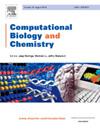Combined analysis of somatic mutations and gene expression reveals nuclear speckles-associated enhanced stemness in gingivobuccal carcinoma under DNA damage response
IF 2.6
4区 生物学
Q2 BIOLOGY
引用次数: 0
Abstract
Smokeless tobacco chewing habits in India lead to a high prevalence of Gingivobuccal oral squamous cell carcinoma (OSCC-GB). Cancer stem cells (CSCs) are a sub-population of cancer cells within a tumor with stem-like properties and are believed to contribute to tumor initiation, progression, increased resistance to drug therapy, and promote post-therapeutic cancer relapse. An RNA-sequencing data-based combined analysis of somatic mutations and gene expression was performed to explore the role of CSCs in disease progression using the novel Indian-origin OSCC-GB cell line ‘IIOC019’ from a patient with tobacco-chewing habit. The identified DNA damage-related known mutational signature (1 bp T/(A) nucleotide insertions and C>T mutations) indicates the impact of smokeless tobacco-related carcinogens in the IIOC019 cell line. The differentially expressed somatic variants, functional impact predictions, and survival analysis reveal the role of DNA damage response (DDR)-related genes in OSCC-GB, with the SON gene as a significant player. The study suggests that the loss-of-function in a somatic variant of the SON gene is linked to nuclear speckles-associated enhanced stemness and increased risk of disease progression in OSCC-GB under DDR conditions. The newly identified CSC-associated somatic variants appear to promote cancer spread, local recurrence, and resistance to chemotherapy or radiotherapy, contributing to the high mortality rates among Indian OSCC-GB patients.
结合体细胞突变和基因表达的分析揭示了DNA损伤反应下龈颊癌核斑点相关的干性增强
印度无烟烟草咀嚼习惯导致牙龈口腔鳞状细胞癌(OSCC-GB)的高患病率。肿瘤干细胞(Cancer stem cells, CSCs)是肿瘤内具有干细胞样特性的癌细胞亚群,被认为有助于肿瘤的发生、进展、增加对药物治疗的耐药性,并促进治疗后癌症复发。利用来自嚼烟习惯患者的新型印度来源的OSCC-GB细胞系IIOC019,对体细胞突变和基因表达进行了基于rna测序数据的联合分析,以探索CSCs在疾病进展中的作用。鉴定出的DNA损伤相关的已知突变特征(1 bp T/(A)核苷酸插入和C>;T突变)表明无烟烟草相关致癌物对IIOC019细胞系的影响。差异表达的体细胞变异、功能影响预测和生存分析揭示了DNA损伤反应(DDR)相关基因在OSCC-GB中的作用,其中SON基因是一个重要的参与者。该研究表明,SON基因体细胞变体的功能丧失与DDR条件下OSCC-GB中核斑点相关的干性增强和疾病进展风险增加有关。新发现的与csc相关的体细胞变异似乎促进了癌症的扩散、局部复发和对化疗或放疗的抵抗,导致了印度OSCC-GB患者的高死亡率。
本文章由计算机程序翻译,如有差异,请以英文原文为准。
求助全文
约1分钟内获得全文
求助全文
来源期刊

Computational Biology and Chemistry
生物-计算机:跨学科应用
CiteScore
6.10
自引率
3.20%
发文量
142
审稿时长
24 days
期刊介绍:
Computational Biology and Chemistry publishes original research papers and review articles in all areas of computational life sciences. High quality research contributions with a major computational component in the areas of nucleic acid and protein sequence research, molecular evolution, molecular genetics (functional genomics and proteomics), theory and practice of either biology-specific or chemical-biology-specific modeling, and structural biology of nucleic acids and proteins are particularly welcome. Exceptionally high quality research work in bioinformatics, systems biology, ecology, computational pharmacology, metabolism, biomedical engineering, epidemiology, and statistical genetics will also be considered.
Given their inherent uncertainty, protein modeling and molecular docking studies should be thoroughly validated. In the absence of experimental results for validation, the use of molecular dynamics simulations along with detailed free energy calculations, for example, should be used as complementary techniques to support the major conclusions. Submissions of premature modeling exercises without additional biological insights will not be considered.
Review articles will generally be commissioned by the editors and should not be submitted to the journal without explicit invitation. However prospective authors are welcome to send a brief (one to three pages) synopsis, which will be evaluated by the editors.
 求助内容:
求助内容: 应助结果提醒方式:
应助结果提醒方式:


